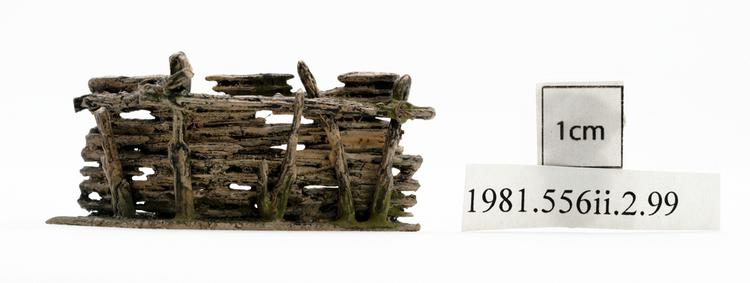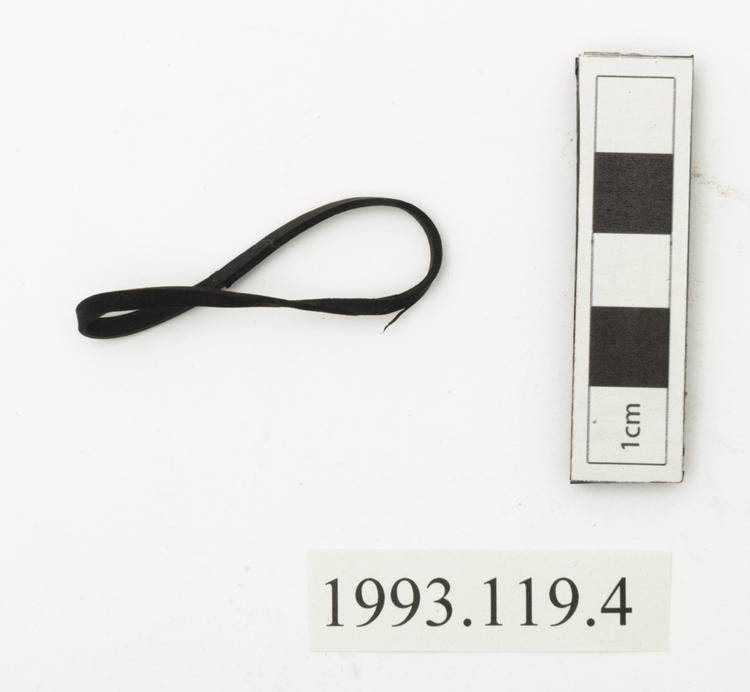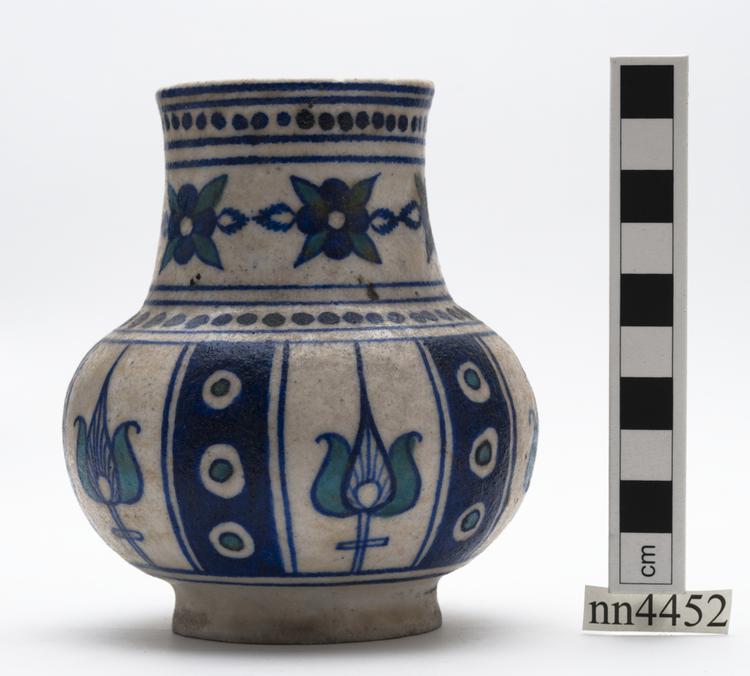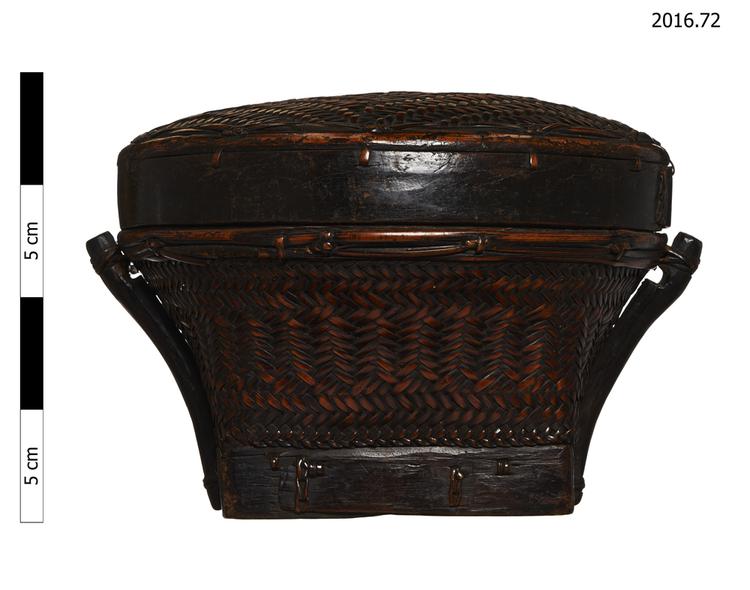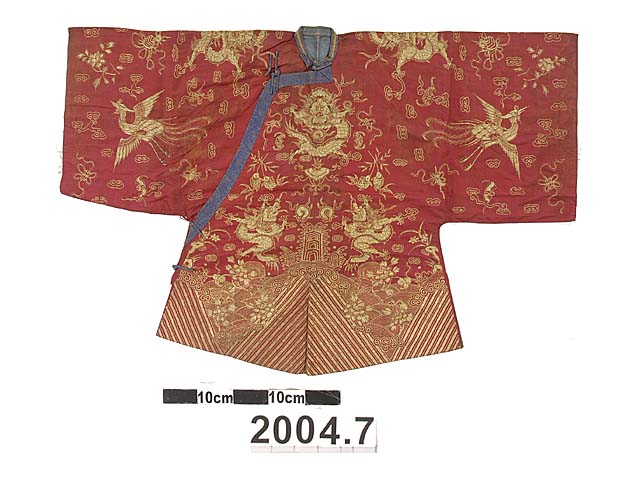
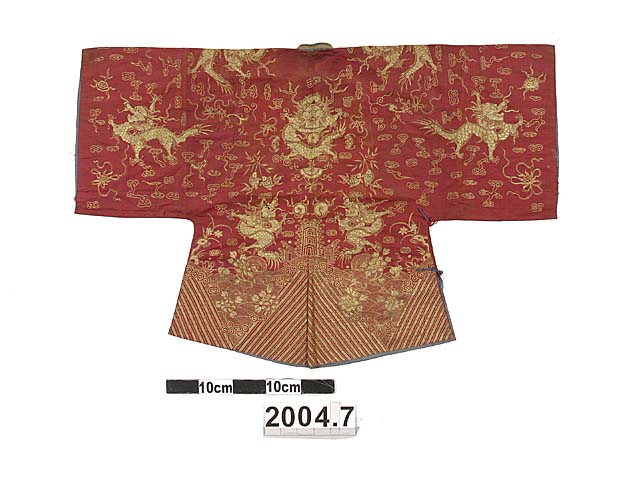
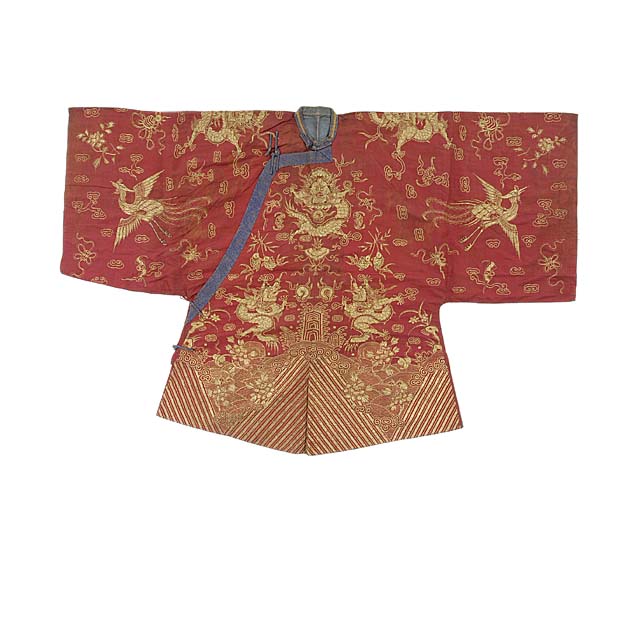
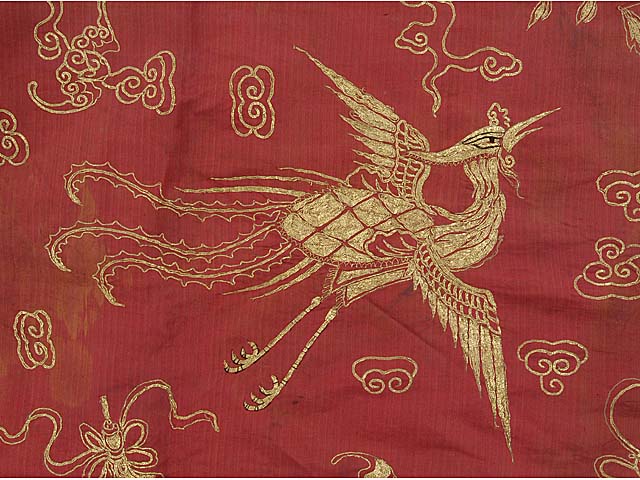
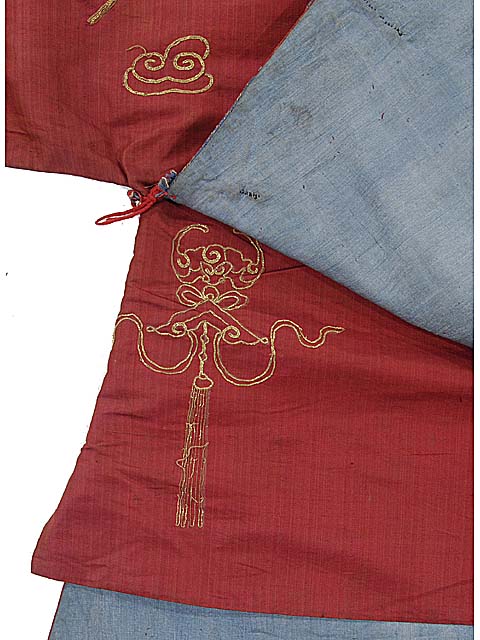
Red silk woman's robe with a blue and gold neckline. Decorated with couched gold-coloured metal-wrapped thread, and some embroidered black detailing. Lined with pale blue silk. The decoration consists of three five-clawed dragons on the front, two on the shoulders, and three on the back each with their accompanying pearl. A phoenix on each sleeve. Two further dragons are on the back of the sleeves, each in the same position as a phoenix on the front. They are surrounded by bats, fish, umbrellas, lotus, coins, conch shells, endless knots, and a canopy. Some of the cloud shapes appear to resemble ruyi sceptres or fungi. The bottom is decorated with a cloud and wave pattern found at the bottom of dragon robes. The waves are interspersed with floral motifs, two interlocked lozenges, and possibly a ruyi sceptre. Three rocks, or mountains, rise from the centre of the waves. The landscape is framed by a flowering plant on a rock. The applied band forming the neckline appears to be decorated with a cloud pattern. On the collar the centre consists of two applied gold-coloured ribbons. The neckline and side opening are fastened with two single knots and loops made from the blue and gold-coloured fabric. On the bottom layer of the overlapping front panels is an additional couched motif consisting of a bat, and what appears to be a suspended musical stone.
Mrs. Lucinda Grant, the granddaughter of the collector William Charles Campbell, brought this collection to the Horniman Museum. Mr. Campbell was born in Cork, Ireland, in 1861. He joined the consular service as a student interpreter in 1884, having achieved first place in the United Kingdom in a competitive examination which took him to study interpreting Chinese at Birkbeck College London. His travel account of an early journey to Korea, is 'an extraordinary account of Korean life'. A trip to Mongolia became a rescue mission for American missionaries in Kalgan when the Boxer Rebellion caught up with them, and in the turbulent events of 1900 he joined Admiral E.H. Seymour in an attempt to relieve the Legations in Peking. His account and books of maps of subsequent journeys by foot through Mongolia and Tibet are mentioned as a 'record of little known countries written by an observant traveller and naturalist' ( Blue Book No. 1. British Parliamentary Publication Sept. 1904). Mr. Campbell, married in 1903 to Violet Coutts of Shanghai, served as a consul in Chengdu and then Peking before retiring to England because of ill health in 1911. He died in London at the age of 65.



